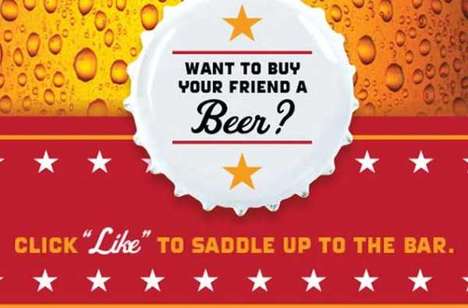5 Ways Organizations Are Leveraging Mobile Technology
Related Trend Reports
Business, Credit Crunch, Food, Gadgets, Interactive, Internet, Lifestyle, Marketing, Mobile, Pop Culture, Retail, Social Media, Tech Consumers are spending more time on their mobile phones than ever before -- in fact, it's predicted that mobile Internet usage will surpass desktop Internet usage by 2014 -- pushing marketers to focus on mobile technology as one of the primary ways to reach customers. Many brands are leveraging mobile technology, incorporating it in a variety of ways to an existing marketing strategy. If your brand is still trying to figure out how to work mobile tech into your own game plan, here are five strategies to consider:
Consumers are spending more time on their mobile phones than ever before -- in fact, it's predicted that mobile Internet usage will surpass desktop Internet usage by 2014 -- pushing marketers to focus on mobile technology as one of the primary ways to reach customers. Many brands are leveraging mobile technology, incorporating it in a variety of ways to an existing marketing strategy. If your brand is still trying to figure out how to work mobile tech into your own game plan, here are five strategies to consider:1) Mobile Websites. The first thing you can do when embarking on your mobile marketing strategy is to create a mobile-friendly website, a version of your existing site that is optimized for viewing and use on a mobile device. As mentioned above, studies show that more people will be using their mobile gadgets to use the Internet than their desktop computers; having a mobile-friendly website ensures customers can easily access your information when they're on the go.
2) SMS/Text Alerts. SMS allows you to reach your customers almost instantly. A 2012 report by Morgan Stanley revealed that 91 percent of smartphone users have their phone within arm's reach 24 hours a day, seven days a week, and according to the wireless industry trade organization CTIA, about 3.5 billion text messages are sent and received every day. Use SMS to supplement your mobile marketing plan by sending customers (only those who have opted in to receive SMS alerts) texts regarding special offers, reminders, discounts, promotions and interactive polls. Examples of brands that use texts as part of their mobile campaigns include HSBC, Snapple, McDonald's, Southwest Airlines and more.
3) QR Codes. The use of QR codes in marketing is steadily growing, as more companies recognize the advantages of using QR codes over other mobile marketing strategies. With a QR code, you're inviting a consumer to perform an action (i.e. scanning) in order to receive something special, be it more information, a promotional coupon, an exclusive video, instructions, etc. For example, the beer brand Yeastie Boys put QR codes on its Digital IPA beer; when scanned, the QR codes took them to instructions on how to brew their own version of the beer. Another example is Taco Bell's quirky fruit-made QR codes. The company used lemons and avocados to create large codes that, when scanned, took consumers to a webpage with more information about Taco Bell's new gourmet foods line, Cantina Bell.
4) Location-Based Services. One of the key ways brands are leveraging mobile technology is with location-based services. Foursquare, Facebook and Google all allow people to check in to places, which presents an opportunity for businesses to geo-target their customers and offer promotions, discounts and rewards based on how frequently they check in; this, in turn, encourages your customers to continue visiting your place of business. For example, Virgin America launched a campaign last year to reward fliers who checked in for their flights at SFO. Frequent fliers were rewarded with things like badges, flight coupons and T-shirts, all of which were personally handed to the fliers from the company's flight crew.
5) Mobile Applications. Downloads for mobile apps are expected to reach 48 billion by the year 2015, according to a study by In-Stat. In addition to feeling comfortable downloading apps from trusted sources, smartphone users prefer apps that offer a degree of entertainment -- gaming, music, social media, etc -- over simple web-based interaction. However, if entertainment doesn't necessarily fit with your brand, there are other types of apps that also appeal to consumers, including mobile payment apps (for example, Starbucks' app) and those that offer a useful service, such as BMW's ParkNow, which allows drivers to reserve parking spaces in busy cities.
Mobile technology is having a profound impact on the way businesses are reaching customers. Download Trend Hunter's Mobile Trend Report to uncover more developments in mobile marketing and how brands today are leveraging mobile technology.
References: trendhunter, trendreports
Featured Articles

Movertise
Mobile advertisements in public places are creating instant buzz

Pay by Phone (UPDATE)
The rise of mobile money via smartphone apps & tools

Appvertising
Apps increasingly used as a medium for selling products

Shoptimization
Innovative tools and apps helping shoppers maximize benefits and discounts

Mobile Markdowns
Discount apps lead consumers to special deals wherever they go

Mobili-eats
On-the-go dining becomes increasingly easy with convenient food apps